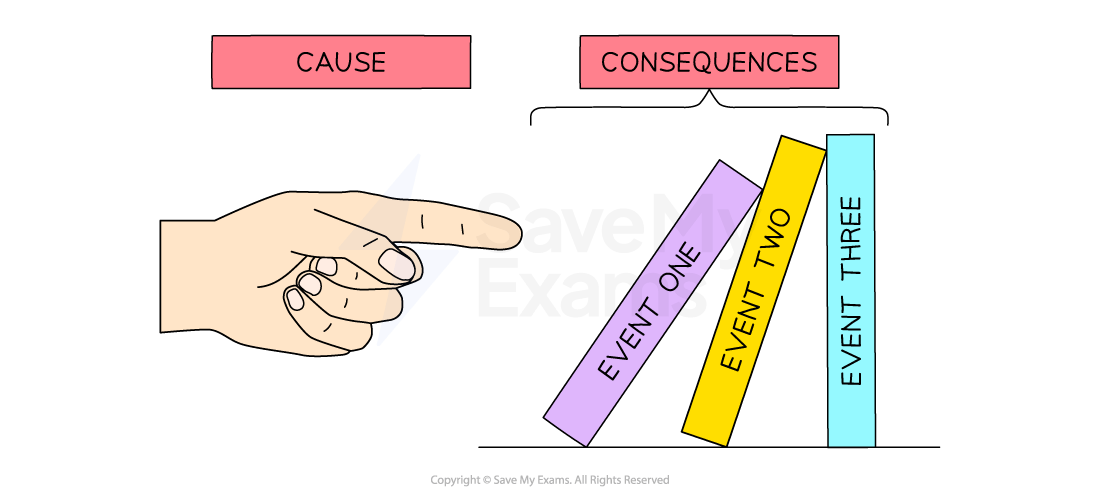The 4 Mark "Explain One Consequence of" Question (Edexcel GCSE History): Revision Note
Exam code: 1HI0
Summary of Question 1
Question 1 requires you to explain a consequence of a historical event
This question has changed format since 2024
Previously, you were asked to explain two consequence of one event
Now, you have to explain one consequence of two given events, separated into Question 1 (a) and Question 1 (b)
Amount of marks | 8 (2x4 marks) |
|---|---|
The time that you should spend on the question | No more than 10 minutes |
An example of the type of question you may encounter can be seen below:

In previous years, this question has focused on the following topics for Superpower Relations:
Year of Exam | Question Topic |
|---|---|
2018 | The fall of the Berlin Wall (opens in a new tab) |
2019 | The Cuban Revolution (opens in a new tab) |
2020 | The collapse of the Soviet Union (opens in a new tab) |
2021 | The Tehran Conference (opens in a new tab) |
2022 | Gorbachev's 'new thinking' (opens in a new tab) |
2023 | Détente in the 1970s (opens in a new tab) |
2024 | The Prague Spring (Czechoslovakia, 1968) |
How to explain consequences
Cause and consequence is a second-order concept
Causes and consequences are like falling dominoes
The causes are what push the dominoes over
For the example question, a cause of the Cuban Missile Crisis was the arms race between the USA and the USSR
The consequences are the other dominoes that fall
For the example question, a consequence of the Cuban Missile Crisis was the establishment of a 'hotline' between the USA and the USSR

Consequence
A consequence in history is something which has happened in response to the cause
Consequences can be:
Different depending on the person
For example, the consequences of the Hungarian Uprising on the people of Hungary were different from those of the US government
Short- or long-term
Both positive and negative
Use causation connectives such as:
"Due to..."
"As a result..."
"Consequently..."
"Explain one consequence of" question structure
Your answer should include:
Specific and relevant knowledge
A developed and well-explained consequence of the event or issue
Your answers could be written in PEE paragraphs:
P — Make a point by writing a consequence of the event in the question
E — Include evidence to support the point you have made (K)
Focus on key knowledge about the event in the question
E — Explain the question (SOC)
Focus on the key demands of the questions
Include a complex explanation that shows your understanding of cause and consequence
To achieve full marks, you need to answer both Questions 1 (a) and 1 (b). The questions are on two different events
Each consequence question is worth 4 marks
2 marks for knowledge (K)
2 marks for your analysis of the second-order concept of consequence (SOC)
8 marks are available for answering both parts of Question 1
Worked example of an "Explain one consequence of" question
Worked Example
1 (a) Explain one consequence of the Prague Spring (1968).
(4)
Answer:
One consequence of the Prague Spring was the Soviet invasion of Czechoslovakia (SOC). One of Alexander Dubcek's reforms was the relaxation of censorship (K). Brezhnev, the leader of the USSR, could not allow a communist nation to remove censorship, as this would weaken people's commitment to the Soviet Union and the Warsaw Pact. This would make other satellite states and the Soviet Union vulnerable to attacks from the West (K). Therefore, the Prague Spring caused Brezhnev to send Warsaw Pact troops into Czechoslovakia on 28th August 1956, and remove Dubcek from power (SOC).

Unlock more, it's free!
Did this page help you?